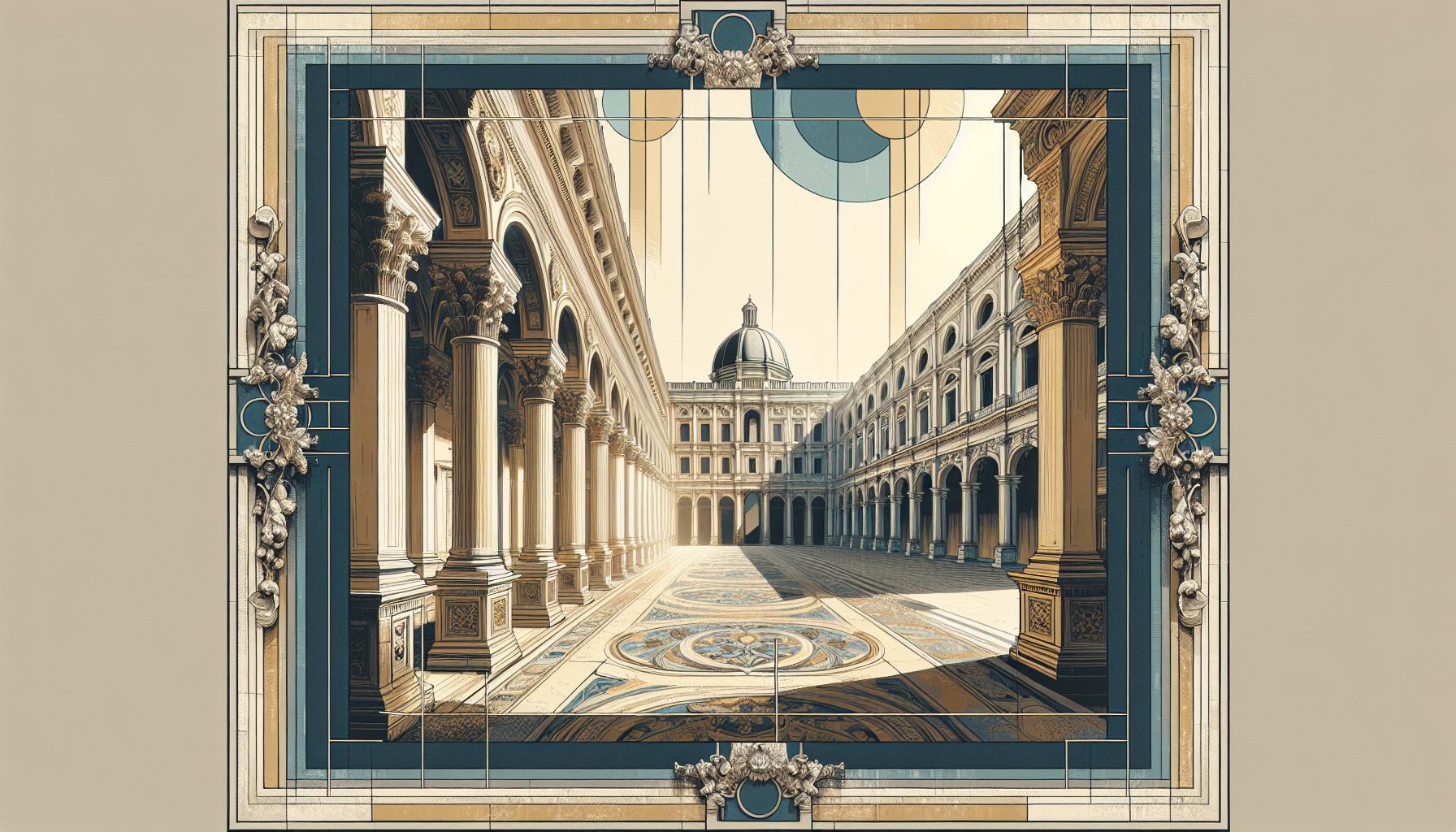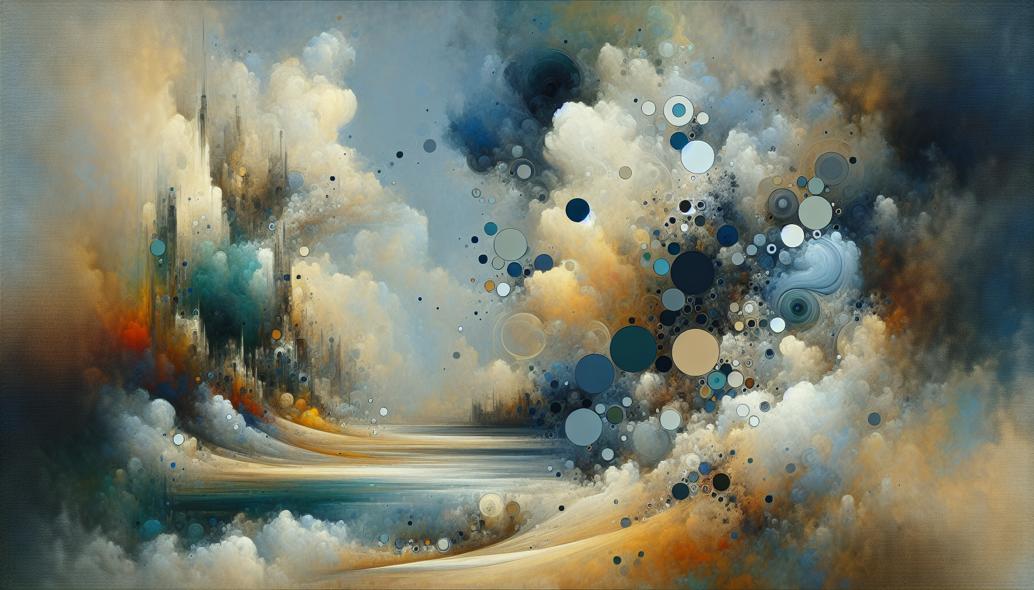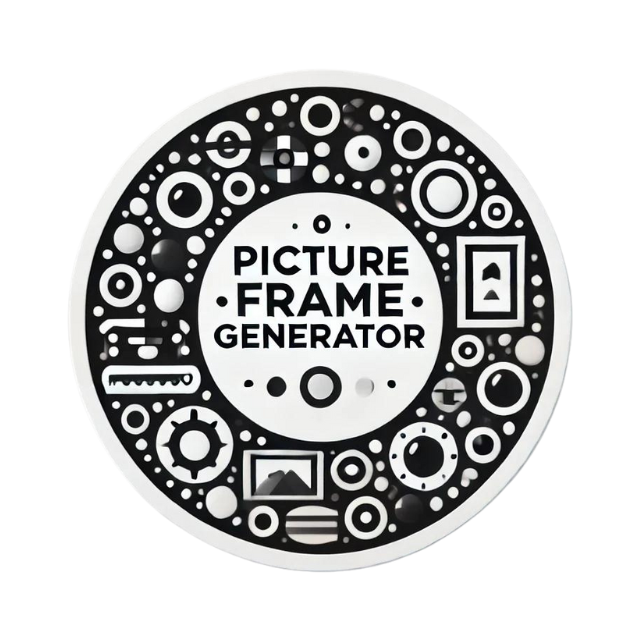Framing Abstract Art - Letting the Frame Speak
Dive into the captivating interplay between abstract art and its frames, where boundaries blur and creativity flows. Discover how virtual frames redefine this dynamic, adding a new dimension to artistic expression.

Framing Abstract Art: Letting the Frame Speak
Abstract art, with its intricate interplay of colors, shapes, and textures, often challenges traditional boundaries between the artwork and its frame. The frame in abstract art is not just a boundary or mere support; rather, it's a powerful element that interacts with the artwork, enhancing or altering its power and influence. This blog post delves into the nuanced relationship between abstract art and its frames, giving particular attention to how modern developments, especially virtual frames like those from PictureFrameGenerator.com, play a part in this dynamic.
In the world of abstract art, the canvas is a playground of chaos and creativity. The frame, conversely, is traditionally viewed as the keeper of order, a rigid structure that contains and defines the art within. Hence, the relationship between abstract art and its frame can be paradoxical: the defined versus the undefined, the structured against the free-flowing. Here, we'll explore how selecting the appropriate frame can either harmonize with or create exciting tension against the artwork.
Understanding the Intricate Dance Between Abstract Art and Frames
Framing involves much more than physically enclosing the artwork. When used effectively, the frame can extend the narrative and emotional impact of abstract art. In conventional art, frames serve as a decorative boundary that enhances the artwork’s theme without overwhelming it. But in abstract compositions, the frame sometimes blurs or even distorts the lines between art and boundary, raising questions about structure, chaos, and order.
Notably, an overly ornate or traditional frame could potentially compete with the abstract nature and disrupt the composition's coherence. Conversely, minimalist frames may complement the fluidity of abstract art by offering stability without imposing on the art’s distinct character. This delicate balance is what makes the relationship between abstract art and its frames a fascinating dynamic to explore.
Let's delve deeper to understand how the material, color, and style of frames can affect abstract art. A sleek, metallic frame may enhance an abstract piece featuring bold, geometric patterns, providing echoes of the futuristic and modern. In contrast, a natural wood frame might anchor a chaotic splash of color, grounding it in a sort of organic tradition.
The Role of Virtual Frames in Abstract Art
In today’s digital age, virtual frames have emerged as a game-changer in how art is experienced, appreciated, and purchased. Utilizing platforms like PictureFrameGenerator.com, artists and collectors can visualize artworks in different framing contexts before making a decision. Virtual frames offer an endless array of possibilities, allowing you to experiment with various styles, colors, and textures without any physical commitment.
Virtual frames offer a unique advantage for abstract art, permitting experimentation with frames that could either complement or contrast the inherent fluidity in an abstract composition. For instance, fluid and dynamic abstract pieces could be set against stark minimalistic virtual frames, providing a visual counterbalance. Similarly, both abstract interpretations of serenity and chaos can beautifully inhabit exaggerated, ornate digital frames, orchestrating a lively dance between the two.

A critical aspect of virtual framing is the ability to see the artwork in a specified interior setting. Abstract art thrives not just on a wall but also in diverse environments where the play of light, décor style, and room color can all enhance its appeal. By using virtual frames, you get to visualize the art within its potential habitat, ensuring a better match between the artwork, frame, and the surrounding space.
Finding Harmony: Choosing the Right Frame for Abstract Art
Consider the Artwork's Palette and Tone
Abstract art features a diverse palette, with shades and tones forming the core of its emotive language. When selecting a frame, choose a color that echoes or contrasts with the artwork’s dominant hues. This technique can either highlight specific areas of the art or provide a seamless flow between the edge of the frame and the art itself.
Match the Frame's Style to the Art's Theme
The frame style should reflect or support the artwork's theme. A heavily textured abstract piece might find harmony in a sleek, modern frame that does not compete with its surface complexity. Conversely, a work characterized by smooth, flowing shapes might benefit visually from textured or baroque frames that create a striking juxtaposition.
Material Matters: Frame Textures and Their Impact
The material chosen for the frame can significantly influence how the abstract work is perceived. Metal frames offer a sleek, contemporary touch that works well with geometric abstraction. Wood frames can add warmth and richness, creating a balance for colorful or intense pieces. Consider acrylic or bespoke material frames for a unique finish that caters to specific artistic statements.
Exploring Virtual Framing Options through PictureFrameGenerator.com
Platforms like PictureFrameGenerator.com offer a diverse range of virtual framing styles that can be tested and personalized before committing. With continuous updates in design, users can anticipate new textures and frame profiles that mirror current art trends. Such innovations transform the way art is framed, sold, and displayed, bestowing an unprecedented degree of freedom and creativity.
Ultimately, framing abstract art allows both the frame and the art to 'speak' in harmony or tension. The choice of frame offers an additional layer of artistic expression, adding coherence, contrast, or emphasis to the piece it encompasses. Understanding how abstract art and frames interact bolsters an appreciation for the subtleties of modern art framing, transforming each piece into a balanced composition of artistry and craft.
